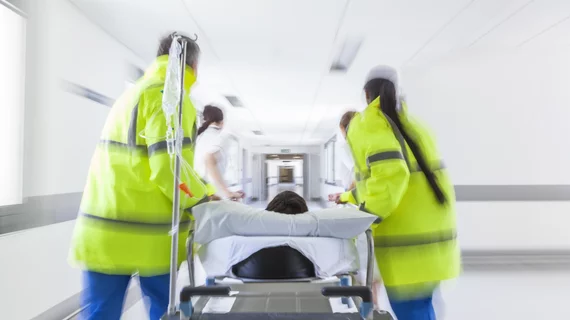Death after TAVR: Heart failure, sudden cardiac arrest stand out as 2 leading causes
Nearly one-fifth of patients die within two years of undergoing transcatheter aortic valve replacement (TAVR), according to a new analysis published in JACC: Cardiovascular Interventions.[1] Heart failure (HF) and sudden cardiac death (SCD) are two of the most common causes of post-TAVR mortality.
“HF-related death and SCD frequently conclude the natural history of severe aortic stenosis,” wrote Jules Mesnier, MD, PhD, a cardiologist with the Quebec Heart and Lung Institute, and colleagues. “Invasive management (either surgical or transcatheter) aims to prevent these dismal events, but nonetheless, HF-related death and SCD remain a concern after both surgical aortic valve replacement and TAVR.”
Mesnier et al. examined data from nearly 5,500 consecutive patients who underwent TAVR at one of 14 locations from November 2014 to May 2021. The mean age was 80.5, and 44.1% of patients were women.
All were treated with newer-generation devices such as the self-expandable Evolut R/Pro/Pro+ valves from Medtronic or the SAPIEN S3/Ultra valves from Edwards Lifesciences. Transfemoral access was used in 89.3% of TAVR procedures. The heart team responsible for each TAVR case made all treatment decisions. Echocardiography data were gathered before each TAVR and before each patient was discharged from the hospital.
Overall, the procedural success rate was 90.4%. After 30 days, mortality was 2.4%, the stroke rate was 2.3% and the myocardial infarction rate was 0.9%.
After two years, 18% of patients had died. Cardiovascular causes were responsible for 50.8% of those deaths. HF was linked to 11.6% of patient deaths, and SCD was linked to 7.5%.
The authors ran a variety of risk models, noting that prior atrial fibrillation, transthoracic access, new-onset persistent left bundle branch block, a prior permanent pacemaker and a lower left ventricular ejection fraction were all associated with a heightened risk of HF-related mortality. Diabetes, a lower estimated glomerular filtration rate, valve-in-valve TAVR and periprocedural ventricular arrhythmias were all associated with a heightened risk of SCD-related mortality.
Meanwhile, infections—including COVID-19—were the most common noncardiovascular cause of death among these patients.
“Mortality after TAVR remained relatively high, reflecting the broad spectrum of patients treated in real-world clinical practice, including inoperable and very high-risk patients,” the authors wrote. “It is important to note that this registry began before the low-risk TAVR trials were published, and as such, the mortality rate can be expected to decline in the following years.”
Mesnier and colleagues also emphasized that this research highlights the importance of monitoring closely after TAVR, especially when high-risk patients are being treated. Getting HF and electrophysiology specialists more involved in that post-TAVR follow-up care could be one way to improve long-term patient outcomes.
“In selected patients, advanced therapies like cardiac resynchronization, physiological pacing, continuous electrocardiogram monitoring, and ICD placement could potentially provide benefits,” the group added.
Read the full study here.

